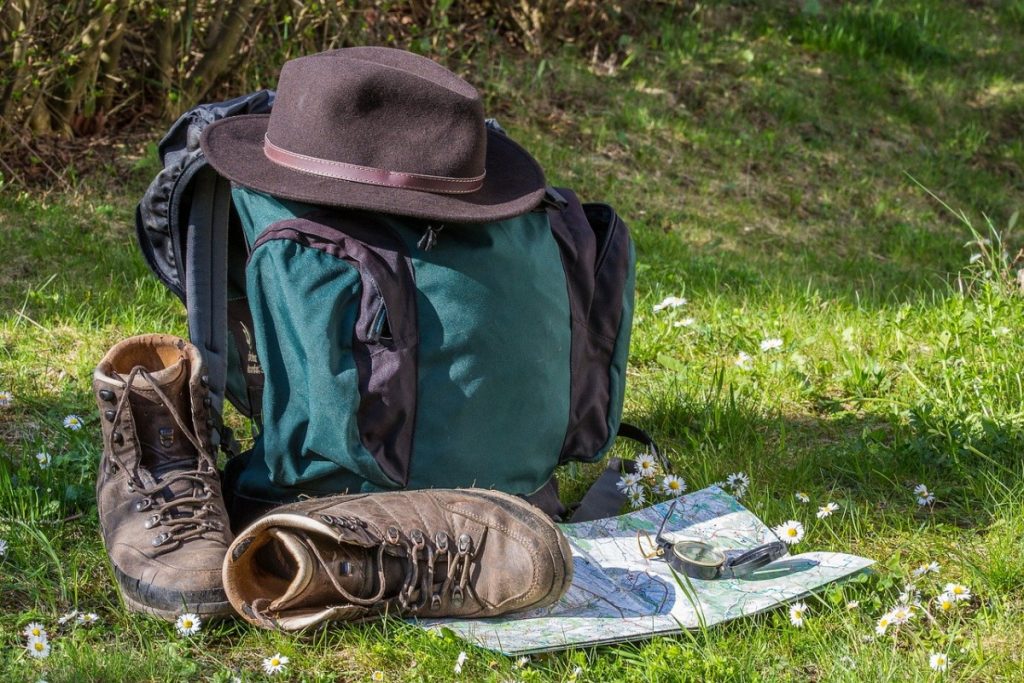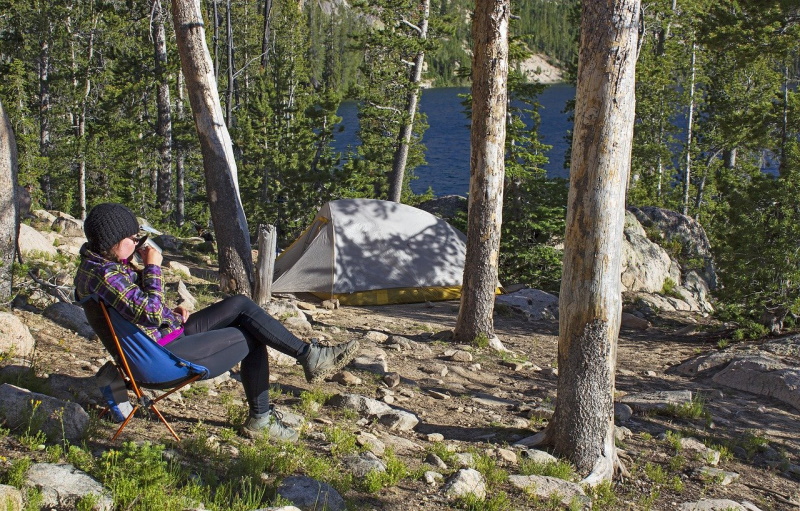Camping provides a wonderful opportunity to spend some time in the great outdoors, communing with friends, family, and nature. It’s also good for your mind, body, and spirit since it will help you to refresh and rejuvenate. The beauty of camping is that it’s affordable, and anybody can do it. However, nothing can ruin a camping trip faster than arriving at your campsite, only to realize that you didn’t carry your tent, or you left your favorite sleeping bag at home. Therefore, if you are heading out for a camping trip, it’s always wise to work with a checklist, to make sure you don’t leave anything important behind. Here is a complete camping checklist of all the essential items that you should carry during your excursion.
Navigation Equipment
If you will be hiking, camping, or backpacking in remote areas, then you should never leave the house without proper navigation equipment. Unexpected weather changes can make the trail markers unfamiliar, causing you to lose direction or track of where you are going. Being stranded or lost in a heavily forested area especially without adequate amounts of food and water is no child’s play. Even if the weather appears fine and friendly, conditions out there are always unpredictable, and that’s why you should be prepared at all times. Some of the navigation tools that should include in your camping trip checklist include:
- Map: Regardless of whether you are going for a short camping trip or an extended backpacking expedition, there is a high chance that you will not have cell phone signal coverage in those remote areas. Therefore, relying on your phone’s map is out of the question, and that’s why you will need a paper map. Topographical maps are sold in stores that sell outdoor gear. You can also get one from a ranger station in the park or even print one online. And once you acquire that map, make sure you learn how to read it properly. After all, it will be of no use if you don’t know how to read and interpret it well.
- Compass: Apart from a topographical map, you will also need a compass. While most GPS devices, watches and smartphones are equipped with electronic compasses, it’s always a wise move to carry a conventional baseplate compass. Unlike your electronic devices, a standard compass doesn’t rely on batteries, which makes it a vital and indispensable backup.
- GPS Device: GPS devices are used to find the exact position of a person or object on a map. When you are lost in the backcountry, you can use your GPS device to identify your exact location on the map, and then use a compass to track your way back to civilization. Remember to pack an extra set of batteries for your GPS device, in case you end up spending more time in the wilderness than you had planned.
- Personal locator beacon: This is a gadget used to alert emergency personnel that someone is in distress and needs help. Once you activate this device, it will help the emergency personnel to identify your location using GPS. Personal locator beacons are important backup devices that you should have when camping in remote areas. They will work well even in areas where cell phone signal is not available.
Apart from the above navigation equipment, you also need to pack a good headlamp or a flashlight. It will help you to find your way to the campsite, in case you end up hiking after dark. Make sure you also pack an extra set of batteries for your flashlight too. Also, you should pack a smaller emergency light inside your first aid kit. You may never know when you will need one.
Shelter
While camping under the stars sounds like such a great idea, the weather can change anytime when you are out there. For example, the conditions can turn from clear to rainy, making it impossible to sleep in the open. And that’s why you should always carry some form of shelter when you are going on a camping trip. You have numerous options to consider when it comes to shelter. For instance, you can choose a hammock tent, freestanding tents, non-freestanding tents, lightweight shelters as well as wall tents, just to name a few. A 3-season tent should be ideal for your needs if you will be going for your trip during the summer. However, if you intend to go for your adventure during winter, then you should opt for a four-season tent. Four-season tents tend to heavier and warmer than 3-season tents, making them suitable for extreme winter conditions. Whichever tent you purchase, ensure you learn how to set it up properly before you head out. Also, you should double-check your backpack to make sure you’ve packed the stakes, rainfly, and stakes. If you expect bugs in your camping area, then you should carry bug shelter. Apart from protecting you against bugs, it will also protect your shelter against sideways rain.
Apart from the tent, you will also need a tent pad. Made of silicone, nylon or polyester, a tent pad is usually laid down on the ground before the tent is set up. It helps to protect the thin material at the floor of the tent from premature wear and tear. A tent pad will also help to even out bumps and other surface imperfections that might be under your tent. A pad will also prevent moisture from seeping into the tent, thus making your sleeping more comfortable while preventing your stuff from becoming wet.
It’s also advisable to carry emergency shelter. In case you are injured or lost during your adventure, you might be forced to spend the night away from your campsite, waiting for help. Something as simple as a big garbage bag can make all the difference. You can use it to cover yourself, or punch some holes on it, and wear it as an additional jacket. If you have the money, you can purchase Mylar space blankets. They are compact, lightweight and affordable.
Sleep System
After an entire day of hiking, hunting or fishing, you will need a comfortable place where you can lie down and rest. You can either use a sleeping bag or a mattress. If you will be camping in your car, then you can use a mattress. On the other hand, if you will be camping in the open, then you should go with a sleeping bag. A good sleeping bag will keep you warm and cozy while cushioning you against the hard ground.
Most sleeping bags are either down-filled or synthetic-filled. Down-fill sleeping bags are lightweight and compress smaller, compared to synthetic-fill bags. They also offer better temperature regulation. However, they are quite expensive and their maintenance needs are high. Synthetic-fill bags, on the other hand, offer less breathability and warmth. However, they are great in wet conditions. You will also need to carry a sleeping bag liner. Besides helping to keep your sleeping bag clean, a liner will also add some warmth. Sleeping bag liners are available in a wide range of materials such as silk, cotton, and polyester.
Hiking Boots or Shoes
Your camping checklist is not complete without a good pair of shoes. The shoes you pack will depend on the trip you will be taking. For instance, you can simply go with your ordinary pair of sneakers if you are just going for a short day hike. However, if you intend to go on a longer backpacking expedition, then you will definitely need to go a dedicated pair of hiking shoes since they tend to offer more padding, stability, support, and comfort. When it comes to shoes and boots, your options are almost endless. For instance, you can opt for approach shoes, trail runners, ordinary hiking boots and hiking shoes. Hiking boots are heavier but sturdier. Therefore, they are ideal for rugged hiking conditions. Trail runners, on the other hand, are lightweight but lack ankle support. Also, they don’t have plenty of traction, which means they are suitable for hanging around the campsite. Hiking shoes tend to fall between trail runners and boots. They are lightweight, offer adequate traction and they are sturdy. If you intend to do some rock climbing or mountain climbing during your excursion, then you should carry approach shoes. Each type of footwear has its merits and demerits as well as best-use applications. Therefore, ensure you choose one that aligns with the trip that you intend to take.
Food and Hydration
The amount and type of food that you should pack for your trip will depend on the number of days that you will be away, as well as the mode of camping that you will be using. If you will be RV camping or car camping, then you can pack more food and cooking equipment. For instance, you can carry fresh vegetables and fruits, meat, canned soups and stews, dairy, eggs or any other type of food that you can fit in your car. For kayak camping, you can opt for fresh and frozen options. On the other hand, if you will be backpacking, then you should opt for extremely lightweight food and gear.
Freeze-dried meals are ideal for a backpacking trip. Besides being lightweight, freeze-dried meals also offer a high energy-to-weight ratio. The only downside to freeze-dried meals is that they can be a bit costly. Whether you will be backpacking, kayak camping or car camping, make sure you look for food options that have a high calorie-to-weight ratio such as meat, beans, and whole grains. Some of the snacks that you can pack include dried fruit, nuts, beef jerky, chocolate, trail mix, and granola bars.
Hydration is equally important in all outdoor adventures, whether you are camping during winter or summer. The amount of water you should drink per day will depend on the intensity of your activities and the prevailing conditions. If you are going for a summer hiking trip, then you should aim to drink at least 3 liters of water per day. However, it’s almost impossible to carry all this water when you are heading out. And this is where a reusable water bottle and a water purifier comes in. In case you run out of water, you simply water from rivers or streams along the way, and use it to quench your thirst.
Sun Protection
Without adequate sun protection, you might end up with sunburns in the short term, as well as premature skin aging, cataracts and skin cancer in the long-term. Also, you may end up with snow blindness, which will make it extremely hard to find your way around the trails. Some of the accessories that you can carry for sun protection include:
- Sunglasses: A pair of quality sunglasses will help to protect your eyes during your outdoor adventures. If you will be spending most of your time around ice or snow, then you should opt for extra-dark glacier glasses. Ensure you choose a type that can block both UVA and UVB rays.
- Sunscreen lotion: Wearing sunscreen during your camping trip will help to protect your skin against UV exposure. As noted earlier, too much exposure to UV radiation can lead to premature skin aging, sunburns as well as skin cancer. When buying sunscreen lotion for your trip, you should choose that one provides a sun protection factor or SPF of 15 or more. For extended outdoor activity, you should go for one with an SPF factor of 30 or more. Also, make sure the formula you’ve chosen blocks both UVB and UVA rays.
Apart from sunglasses and sunscreen lotion, sun-protection clothing is also effective in blocking harmful UV rays. Different pieces of clothing offer different levels of UV protection. But regardless of the pieces you choose, remember to pack a wide-brimmed hat. It’s one of the most effective camping accessories for sun protection.
First Aid Kit
As much as you would like everything to go according to plan during your camping trip, that is not always the situation. Regardless of the type of camping that you are doing, you should always carry first aid essentials. You can either purchase a ready-made first aid kit or put together your own, using supplies from a chemist. Regardless of the option you choose, make sure your emergency kit includes supplies like bandages, pain medicine, tweezers, sterile wipes, hand sanitizer, safety pins, small scissors, moleskin for blisters, as well as antiseptic wipes. You can also add other items, depending on your needs as well as the space that you have in your backpack. Also, make sure you learn how to use the different items in that kit. For instance, you should know how to sanitize a wound, dress a wound, or bandage a sprained joint.
Closing Remarks
Adequate preparation is vital when it comes to every outdoor adventure. Carrying the necessary equipment and supplies can make a significant difference in your camping experience and enjoyment. And with a checklist, it will be easy to identify all the essential supplies that you should carry for a successful trip.






0 comments